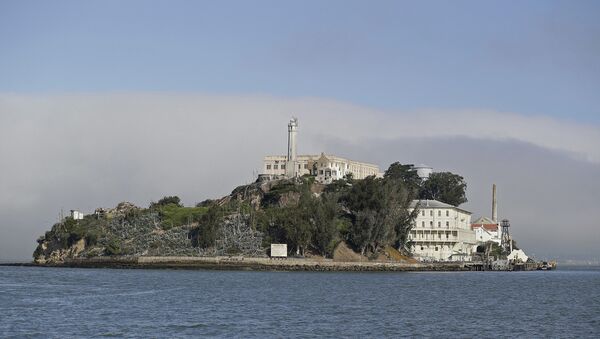Archeologists armed with advanced ground-penetrating radar and terrestrial laser scanning equipment have uncovered a network of hidden military trenches underneath Alcatraz, and they did it without having to dig underneath the famous prison, Science Daily has reported.
The research, conducted by academics from Binghamton University and the State University of New York, allowed archeologists to assess the ground underneath the former recreation yard at Alcatraz with pinpoint precision in search of the remnants of hidden buried structures.
What archeologists uncovered was a 'bombproof' trench network, including a vaulted brick masonry tunnel and ventilation ducts, which ran from east to west across the yard.
Archeologist Timothy de Smet from Binghamton University said he was "surprised" by the discovery "for several reasons."
"The remains of these historical archeology features were just a few centimeters beneath the surface and they were miraculously and impeccably preserved," he explained.
"The concrete veneer of the Recreation Yard floor is incredibly thin and, in fact, in places sitting directly atop the architecture from the 1860s. We also learned that some of the earthwork traverses were covered over with thin concrete layers through time, likely to decrease erosion on the rainy windy island. It was wonderful to find the history just beneath our feet that we can visualize for the public," de Smet added.
With this recent study, archeologists' tools enabled them to accurately identify the remains of the fort under Alcatraz prison, with de Smet saying their "breakthrough" method could be used for investigations underneath cultural landmarks across the US and worldwide.
"With modern remote sensing methods like these, we can answer fundamental archaeological research questions about human behavior, social organization and cultural change through time without costly and destructive excavation, thereby preserving these non-renewable archaeological resources in the ground — or in situ as we say in the field — for future generations," de Smet stressed.
De Smet and his colleagues recently published their findings in the Near Surface Geophysics academic journal.
Alcatraz closed down in 1963 after being deemed economically infeasible. Before its closure, it housed some of America's most notorious criminals, including Chicago crime boss Al Capone, bank robber Harvey Bailey, and gangster George Kelly Barnes. Inmates made a total of 14 escape attempts, with only one, a daring June 1962 plot by inmates Frank Morris, John Anglin and Clarence Anglin, thought to have been plausible. Since its closure, Alcatraz has become a globally-known piece of Americana, appearing in films, television, novels and music.


